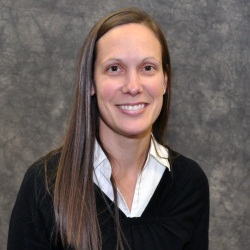Educational development is a career path that individuals often pursue after spending time in higher education and finding new ways to engage intellectual curiosity and scholarship opportunities. Indeed, this is the space where many colleagues, including those on our MedEdPearls Team, have landed and found their true niche in higher education and health professions education.
Frake-Mistak et al. (2023) outlined several titles for those in educational development, including instructional designer, curriculum specialist, and academic developer, all of whom have the core desire to improve instruction, the student experience, and student learning often by leveraging the scholarship for teaching and learning (SoTL). Over three decades ago, the concept of SoTL was introduced when Ernest Boyer (1990) used the term “scholarship for teaching” in Scholarship Reconsidered and asserted that good teaching means that faculty-scholars are also learners.
The 4M Framework (micro-meso-macro-mega) was examined and applied by Frake-Mistak, Friberg, and Hamilton as a continuum in educational development for SoTL. The authors indicate that the framework is more flexible and fluid among educational developers rather than being discrete, fixed points as this may be the case among individual SoTL scholars.
Educational development, particularly in the realm of SoTL, fluctuates as this work often impacts contexts inside and outside of the organization as those working in educational development often engage and collaborate on several concurrent projects. The authors outline a SoTL-focused educational development continuum with intersecting vertical and horizontal axes that result in four quadrants. The vertical axis operates along four organizational levels which include a micro (individual, faculty, class), meso (departmental), macro (institutional), and mega (discipline, national, international) level. Additionally a horizontal axis that represents the SoTL activity time investment of a one-time task or project-based SoTL work in educational development. The result is a four quadrant continuum for SoTL-focused work in educational development that may shift between quadrants with varying context-driven needs and demands in health professions education.
A few examples of SoTL-focused work that health professions educational developers may find themselves engaged in among the different quadrants include:
- Peer reviewer and/or author of MedEdPearls blog posts (mega and project-based)
- University organizer for semi-annual teaching and learning conference (macro and task-based) to include SoTL project presentations from the meso level
- Creator and administrator of internal SoTL grants (macro or meso and project-based)
- Presenter at a SoTL conference (mega and task-based) such as AAMC Group on Educational Affairs (GEA), The Generalists in Medical Education (TGME), or the International Association of Medical Science Educators (IAMSE)
By embracing this 4M continua, educational developers have a way to better explain and situate their work in SoTL at their institution and beyond. What examples of SoTL-focused work do you have and how are they situated in the 4M continua? Share your ideas via LinkedIn at #MedEdPearls!
#MedEdPearls are developed monthly by the health professions educator developers on educational affairs. Previous #MedEdPearls explored designing transforming transitions, providing effective feedback, and mutual mentoring.

Jennifer Hillyer, PhD, is Executive Director of the Institute for Teaching Excellence and assistant professor of Internal Medicine at Northeast Ohio Medical University. Jennifer’s professional interests include instructional and course development, faculty development, and education research. Jennifer can be followed on LinkedIn or contacted via email.
#MedEdPearls

Jean Bailey, PhD – Virginia Commonwealth University School of Medicine
Rachel Moquin, EdD, MA – Washington University School of Medicine

